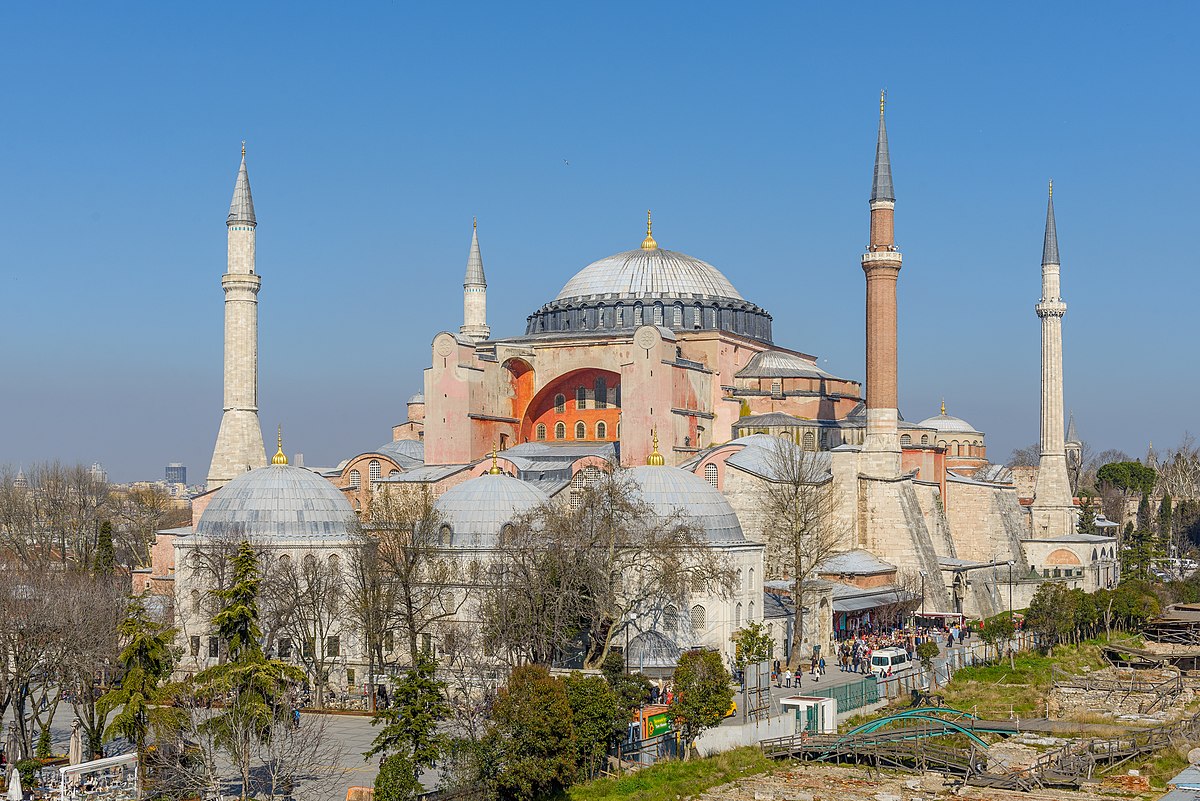Hagia Sophia, situated in the heart of Istanbul, is a architectural marvel that has stood as a symbol of cultural and religious significance for over a millennium. Originally constructed as a cathedral, later converted into a mosque, and now functioning as a museum, Hagia Sophia’s rich history reflects the diverse cultural and religious tapestry of the city.
Historical Significance:
- Byzantine Era: Commissioned by Emperor Justinian I, construction of Hagia Sophia began in 532 AD. Completed in 537 AD, the cathedral was dedicated to the Wisdom of God (Hagia Sophia in Greek) and served as the primary church of the Eastern Orthodox Church for nearly a thousand years.
- Ottoman Era: Following the Ottoman conquest of Constantinople in 1453, Hagia Sophia was converted into a mosque by Sultan Mehmed II. The minarets were added, and the interior was adorned with Islamic elements, while the iconic mosaics were either covered or removed.
- Modern Era: In 1935, under the Republic of Turkey, Hagia Sophia was secularized and converted into a museum by Mustafa Kemal Atatürk, the founder of modern Turkey. This status remained until 2020.
- 2020 Reconversion: In July 2020, Hagia Sophia was reconverted into a mosque by a presidential decree. The decision stirred global reactions, as the iconic monument had symbolized both Christian and Muslim heritage.
Architectural Marvel:
Hagia Sophia’s architecture is a testament to the engineering genius of its time. Key features include:
- Dome: The massive dome, with a diameter of 31 meters (102 feet), was an engineering marvel in the 6th century. Its weight is distributed through massive pendentives, allowing the structure to stand without the need for massive supporting columns.
- Mosaics: The interior was adorned with breathtaking mosaics depicting religious figures, biblical scenes, and intricate geometric patterns. While many were covered or removed during the Ottoman era, some have been restored and preserved.
- Minarets: The addition of minarets during the Ottoman era altered the exterior silhouette of Hagia Sophia, blending Byzantine and Islamic architectural elements.
Museum Collections:
During its time as a museum, Hagia Sophia housed a significant collection of Byzantine artifacts, including mosaics, icons, and religious relics. Some of these artifacts are now displayed in the Hagia Sophia Grand Mosque.
Visitor Experience:
Visitors to Hagia Sophia can explore its awe-inspiring interiors, marvel at the intricate mosaics, and witness the fusion of Christian and Islamic elements. While it’s advisable to check visiting hours and any potential prayer times (for the mosque), experiencing Hagia Sophia is a journey through the pages of history.
Impact on Culture:
Hagia Sophia’s conversion and reconversion have sparked discussions about cultural identity, religious tolerance, and the preservation of historical sites. The monument’s significance transcends its physical structure, embodying the dynamic interplay between different cultures and faiths that has defined Istanbul’s character.
Conclusion:
Hagia Sophia stands as a living testament to the rich tapestry of Istanbul’s history. Its conversion into a mosque in 2020 has added a new chapter to its story, sparking debates and reflections on cultural heritage, religious diversity, and the role of historical sites in contemporary society. Whether viewed as a cathedral, mosque, or museum, Hagia Sophia remains an enduring symbol of Istanbul’s ability to bridge the past and present, honoring the legacies of multiple civilizations that have called the city home.



